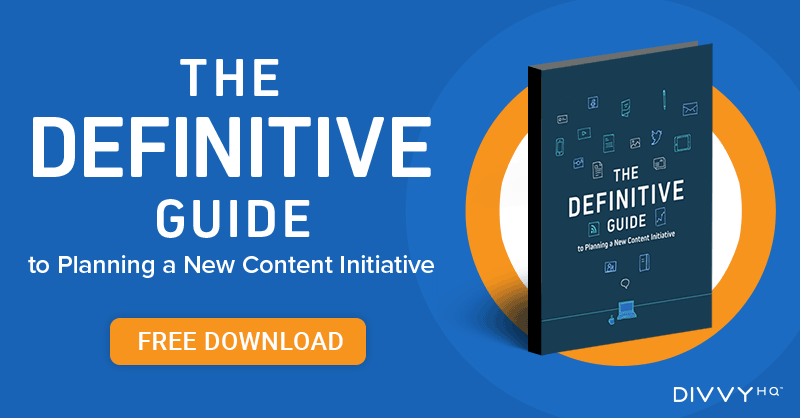Preface: Have you ever started down the path of writing on a topic, but realized the topic is big enough to split into multiple posts? Yeah, that just happened. I’d like to introduce you to our next “series” that digs into ways in which you can improve and streamline your content marketing process through the use of strategy, process and content templates.
Series Intro
In our previous roles running marketing agencies, Brock Stechman and I lived by the “work smarter, not harder” mantra, much in an effort to not completely burn out our creatives who were on the front lines of the daily battle. One key aspect of our creative process that steadily improved over the years was a conscious effort to try and templatize much of what we did every day… how we ran meetings, how we facilitated strategy engagements, how we documented processes, the format of content assets, etc.
Were there times when we had to step outside of the template and just let the creative juices flow freely? Of course. But the template helped us get back on track and ensured that we A) didn’t miss an important step, and B) produced a consistent quality of output.
The Benefits of Templates
The meaning of the word “template” is a bit different across industries. Early in my career, I worked for a manufacturer that used a variety of templates and molds to extrude giant plastic wastewater treatment systems (think big, fancy septic tanks for subdivisions). In that same company, we had prepared a variety of brochure and sales sheet templates in PageMaker so that I could bang out new print collateral without having to call up our design agency every time. In these two scenarios, the form was very different, but the function was the same. These templates helped us:
- Save money
- Produce faster
- Produce with a consistent quality
- Streamline the process
Much like my brochure example, you’ve probably been using templates throughout your creative career. But with the nascency of content marketing, perhaps there are some new content marketing templates that you should consider, especially if improving the speed, quality or efficiency of your content marketing process is top of mind.
Part 1: Templatize Your Strategic Process
For a few years now, Joe Pulizzi and the rest of the CMI crew have stressed over and over the importance of having a documented content marketing strategy. If you have one, you’re much more likely to be successful. We are 100% in that camp. But we also talk to large organizations every day that are so large, that actually going through a proper, company-wide strategy process is almost unfathomable. Ok…let’s crawl before we walk.
A good way to ease into a better strategic position is to leverage a simplified strategic framework (here’s a great one from Velocity Partners) that can be used as a template to guide smaller strategy development meetings with individual teams, business units or regions. Breaking the process into smaller, manageable chunks may allow you to chip away at the bigger strategic endeavor.
If you’re developing strategy for just a single content initiative, our Definitive Guide to Planning a New Content Initiative eBook (and included one-page strategy worksheet) is a perfect template for planning and launching a new content property or campaign. Other strategy-centric templates could include:
- Content audit templates
- Customer survey templates
- Customer interview templates
- Stakeholder interview templates
- Buyer profile or persona development templates
If you’d like a closer look at any of the content marketing templates mentioned above, please leave us a comment. We’re always happy to help a fellow content nerd.
Part 2 Preview
Next week, we’ll dig into the variety of ways (including tools and template examples) where efficiencies can be gained in the content ideation, planning and production workflow areas. If you’d like to be notified of the upcoming posts in this series, please subscribe!

